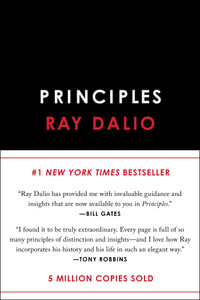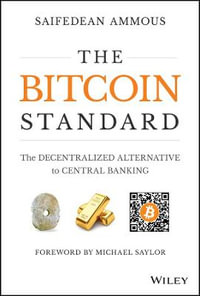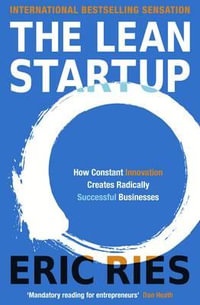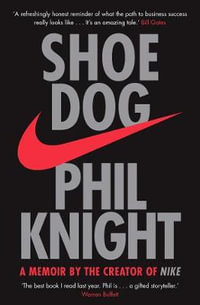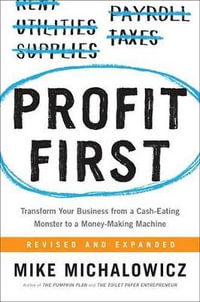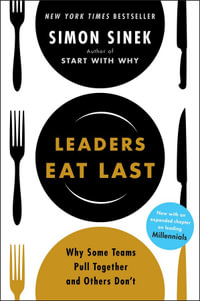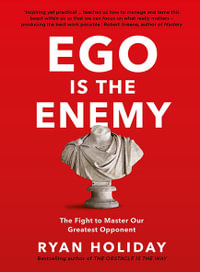
Foundations of Sustainable Business
Theory, Function, and Strategy
By: Nada R. Sanders, John D. Wood
Paperback | 22 November 2019 | Edition Number 2
At a Glance
352 Pages
25.5 x 20.5 x 1.3
New Edition
Paperback
RRP $263.95
$233.50
12%OFF
or 4 interest-free payments of $58.38 with
orAims to ship in 7 to 10 business days
The second edition of Sustainable Business prepares future business leaders to tackle the most crucial social and environmental issues of our time. This engaging textbook provides students with a comprehensive, balanced introduction to integrating sustainable business policies into all core business functions and processes. The text employs a qualitative-based learning process to help students understand how leadership, finance, accounting, risk management, marketing, supply chain management, and operations can be adapted to meet the sustainability goals of the 21st century.
Looking at sustainable business from the managerial viewpoint, the fully-updated new edition explains how and why business is evolving due to increased consumer and regulatory pressure for sustainable performance. Business topics are first introduced in the same manner as traditional MBA programs, and then examined through the lens of sustainably. The text incorporates real-life examples of social and environmental leadership to demonstrate the efficacy of good sustainable business decisions, and illustrates the negative ramifications of outdated, purely economic-driven managerial decision-making. Influential concepts based on interdisciplinary research in sustainability are discussed in detail, and practical insights address how to turn policy into practice in the workplace.
Preface viii
Part I Introduction
1 Introduction to Sustainable Business 3
Sustainable Companies Gain the Upper Hand
1.1 What Do We Mean By “Sustainability”? 4
1.1.1 Sustainability is a Loaded Word 4
1.1.2 Running Out of Space 6
1.1.3 The New Global Trend: Doing Bad and More Good 10
1.1.4 The Unsustainable Status Quo: Fisheries 11
1.2 Causes and Consensus Around Sustainable Business 13
1.2.1 What Do Externalities Have to Do with It? 13
1.2.2 Shareholder Pressure 15
1.2.3 Multiple Drivers, One Destination 15
1.2.4 Baseline Shift Toward Sustainability 16
1.3 The Forms and Stages of Sustainable Business 18
1.3.1 Sustainability Marginalized 18
1.3.2 Sustainability Grows Up 19
1.3.3 Sustainability Gears Up 22
1.4 The Business Case for Sustainability 23
1.4.1 There is Actually Just One Bottom Line 23
1.4.2 Environmental Changes and Business Implications 24
1.4.3 Green Shoots and Blue Oceans 25
1.4.4 Overview of the Textbook 28
Key Terms 29
Discussion Questions 29
Case 1: BMW Pioneers Sustainable Automotive Technology 29
Case 2: Greening the Game of Golf 30
Further Research 31
Endnotes 31
2 Perspectives 35
Ecosystem Services
2.1 Introduction: Perspectives on Sustainability 36
2.2 Social Perspectives 37
2.2.1 Stakeholder Engagement 37
2.2.2 Corporate Social Responsibility 38
2.2.3 Human Rights 41
2.2.4 Laws and Regulations 42
2.2.5 Ethics and Environmental Justice 43
2.3 Economic Perspectives 45
2.3.1 Globalization and its Discontents 45
2.3.2 Environmental Kuznets Curve and its Criticism 47
2.3.3 Natural Capital Accounting and Sustainable Land Use 49
2.3.4 Sustainable Engineering 52
2.4 Environmental Perspectives 53
2.4.1 Regenerative Capacity 54
2.4.2 Biomimicry 54
2.4.3 Cradle-to-Cradle 55
2.4.4 Human Ecology 56
Conclusion 57
Key Terms 57
Discussion Questions 58
Case 1: Emerging Drinking Water Contaminants 58
Additional Material 59
Endnotes 60
3 Leadership, Change Management, and Corporate Governance 63
Sustainable Leadership, Corporate Governance, and Innovation at Unilever
3.1 Introduction: Leadership as Antidote to Collective Action Problems 64
3.1.1 What is a Collective Action Problem? 66
3.1.2 What is a Tragedy of the Commons? 66
3.1.3 Sustainability through Self-Regulation 67
3.1.4 The Sustainable Leadership Gap 69
3.2 Leadership 70
3.2.1 What is Sustainable Business Leadership? 70
3.2.2 New Competencies of Sustainable Business Leaders 70
3.2.3 Sustainable Leadership Strategy 73
3.3 Change Management 75
3.3.1 Entrepreneurialism and Innovation 75
3.3.2 Developing a Sustainable Business Strategy 77
3.3.3 Change Management 78
3.3.4 Hiring Strategy and Employee Engagement 79
3.4 Strategic Alignment for Sustainability Through Corporate Governance 81
3.4.1 Strategic Alignment: Integrating Sustainability into Corporate Strategy 81
3.4.2 Sustainable Corporate Governance 81
3.4.3 Corporate Governance Mechanisms 83
3.4.4 Resolving Conflicts Between Shareholders and Stakeholders: Rise of the B-Corp 86
3.4.5 Executive Compensation 87
3.4.6 Rise of the Chief Sustainability Officer 89
Key Terms 91
Discussion Questions 91
Case 1: Corporate Leadership Amidst Turbulent Times 91
Case 2: Drilling Down on Corporate Governance 93
Further Research 93
Endnotes 93
Part II Accountability
4 Legal Frameworks for Sustainability 99
Climate Change Divides Corporate Lobbying Efforts
4.1 The Role of Law in Corporate Sustainability 100
4.1.1 Hard Law, Soft Law, Legal Hierarchy, International Law 103
4.1.2 The Legal Environment of Business 106
4.1.3 Incentives for Legal Compliance 106
4.2 Law and Sustainability by Business Area 108
4.2.1 Design, Production, and Pollution 109
4.2.2 Supply Chain, Marketing, and Consumer Protection 112
4.2.3 Packaging, Waste, and Disposal 118
4.2.4 Land Use Planning 119
4.3 Limits of the Law 121
4.3.1 Legal Compliance vs. Sustainable Performance 121
4.3.2 Lobbying for Lax Laws 121
4.3.3 Under-Enforcement of Good Laws 123
Key Terms 123
Discussion Questions 124
Case 1: Can Litigation Set Public Policy on the Use of Drugs in Industrial Agriculture? 124
Case 2: The American Legislative Exchange Council and So-Called Ag Gag Rules 125
Further Research 126
Endnotes 126
5 Metrics, Tools, and Reporting: The Role of Finance and Accounting 129
Nature’s Invoice
5.1 Introduction: Why Measure and Report? 130
5.1.1 The Role of Finance & Accounting 130
5.1.2 Information-Driven Sustainable Business Model 132
5.1.3 (Almost) Everyone is Doing It 134
5.1.4 What are the Benefits of Monitoring and Reporting? 135
5.1.5 Drivers of Sustainability Reporting 137
5.2 Metrics 138
5.2.1 What are Metrics? 138
5.2.2 The Triple Bottom Line 140
5.2.3 Sustainability Performance Metrics 140
5.2.4 What to Look for in a Metric 142
5.3 Tools 142
5.3.1 Natural Capital Accounting 143
5.3.2 Life Cycle Assessment 143
5.3.3 Environmental Footprinting 145
5.4 Reporting 147
5.4.1 Leadership and Reporting 148
5.4.2 Threshold for Reporting: Materiality 148
5.4.3 Sharing Sustainability Information with End Consumers 150
5.4.4 ISO Standards For Sustainability Reporting 151
5.4.5 Global Reporting Initiative 151
Key Terms 153
Discussion Questions 154
Case 1: Chocolate Crusaders 154
Case 2: Suede Shoe Blues 155
Further Research 156
Endnotes 156
6 Risk Management 159
Happy Meals Dodge Tainted Toys
6.1 Risk Management and Sustainable Business 160
6.1.1 The Role of Risk Management in Sustainable Business 161
6.1.2 The Risky Environment of Business 163
6.1.3 The Moral Psychology of Risky Business Decisions 164
6.1.4 The Enterprise Risk Management Continuum 165
6.2 Risk Identification 169
6.2.1 Business Risks Managed by Sustainability 169
6.2.2 Preventable Versus Uncontrollable Risk 172
6.2.3 Water-Related Business Risks 173
6.2.4 Climate Change-Related Business Risks 174
6.3 Risk Assessment 174
6.3.1 Scenario Planning 175
6.3.2 Measuring the Materiality of Risk 176
6.3.3 Vulnerability 178
6.3.4 Putting It All Together 180
6.4 Risk Response 180
6.4.1 Bearing Risk 181
6.4.2 Avoiding Risk 181
6.4.3 Mitigating Risk 181
6.4.4 Sharing Risk: Insurance 183
6.5 Risk Management Strategies in Business 185
6.5.1 Business Continuity Planning 185
6.5.2 Resilience 186
Key Terms 187
Discussion Questions 187
Case 1: Managing a Hospital’s Fight Against an Epic Flu 188
Further Research 188
Endnotes 189
Part III Implementation
7 Marketing 193
From Superbowl Ads to Viral Videos
7.1 Introduction: Marketing Sustainability 194
7.1.1 Conventional Marketing versus Marketing Sustainability 195
7.1.2 Segmenting the Market for Sustainable Products 196
7.1.3 Trends In Marketing Sustainability: Avenues for SMEs 198
7.1.4 Rewards of Sustainable Marketing 200
7.2 Legal and Ethical Boundaries 202
7.2.1 Truth-In-Advertising Rules 202
7.2.2 Guidelines for Marketing Environmental Attributes 203
7.2.3 Product/Process Information Distinction 204
7.2.4 What is Greenwashing? 206
7.3 Strategy for Marketing Sustainability 207
7.3.1 Sustainability Marketing Principles 207
7.3.2 Brand Development 208
7.3.3 Stages of Marketing Sustainability 209
7.3.4 International Marketing 210
7.3.5 Challenges to Marketing Sustainability 211
7.4 Certification Programs 216
7.4.1 Guidelines for Third-Party Certification Programs 216
7.4.2 Types of Certification Programs 217
7.4.3 Certification Design 218
7.4.4 Challenges to Sustainable Certification 220
Key Terms 221
Discussion Questions 221
Case 1: Marketing Sustainable Dinner Ware 221
Case 2: Nike, Inc. v. Kasky 222
Further Research 223
Endnotes 224
8 Supply Chain Management 227
Building a Sustainable Supply Chain: Lessons from Starbucks
8.1 Sustainable Supply Chain Management in Context 228
8.1.1 The Role of SCM in Sustainability 229
8.1.2 Managing Supply Chain Risks: Going Beyond the First Tier 231
8.1.3 Traceability and Increased Supply Chain Transparency 232
8.1.4 Business Benefits of Sustainable SCM 233
8.1.5 Water-Related Supply Chain Risks 234
8.1.6 Human Rights, Child Labor, and Occupational Safety in Global Supply Chains 234
8.2 Managing the Entire Product Life Cycle 236
8.2.1 Life Cycle Assessment and Cradle-to-Cradle Design 237
8.2.2 Product Design 237
8.2.3 Packaging 238
8.2.4 Sourcing 240
8.2.5 Process Design 241
8.3 Managing the Supply Chain Infrastructure 242
8.3.1 Logistics 242
8.3.2 Reverse Logistics 243
8.3.3 Transportation 244
8.3.4 Facility Location 246
8.4 Managing Supply Chain Stakeholders 248
8.4.1 Suppliers 248
8.4.2 Consumers 249
8.4.3 Non-Governmental Organizations (NGOs) and Nonprofits 251
8.4.4 Governmental Agencies and Regulation 251
8.4.5 Competitors 252
8.4.6 Communities 253
Key Terms 255
Discussion Questions 255
Case 1: Gone Fishing: Human Trafficking on the High Seas 255
Case 2: iSlave: Labor Conditions at Consumer Technology Parts Suppliers 256
Further Research 257
Endnotes 257
9 Operations Management 261
Ancient Air Conditioning in Modern Building Design
9.1 The Role of Operations Management in Sustainability 262
9.1.1 The OM Function 262
9.1.2 How OM Impacts Sustainability 264
9.1.3 Water-Related Operations Management Risks 265
9.2 Operations Strategy 266
9.2.1 Sustainable Operations as a Competitive Priority 267
9.2.2 Sustainable OM Strategy 267
9.2.3 Stakeholder View of Operational Output 269
9.2.4 Striking the Right Balance through Quality Management 269
9.3 Operations Design 270
9.3.1 Product Design 270
9.3.2 Process Design 274
9.3.3 Process Performance Metrics 275
9.4 Operations Planning & Control 277
9.4.1 Inventory Management 277
9.4.2 Work System Design 278
9.4.3 Enterprise Resource Planning: Using Big Data Analytics 279
9.4.4 Healthy, Productive Employees: Scheduling 280
9.5 Facility Management, Layout, & Design 282
9.5.1 Facility Management 282
9.5.2 Facility Layout 284
9.5.3 Facility Design 284
Key Terms 286
Discussion Questions 286
Case 1: Too Little or Too Much: Inventory Management During Environmental Crises 287
Further Research 287
Endnotes 288
Glossary 291
Index 315
ISBN: 9781119577553
ISBN-10: 1119577551
Published: 22nd November 2019
Format: Paperback
Language: English
Number of Pages: 352
Audience: College, Tertiary and University
Publisher: John Wiley & Sons Inc (US)
Country of Publication: US
Edition Number: 2
Dimensions (cm): 25.5 x 20.5 x 1.3
Weight (kg): 0.64
Shipping
| Standard Shipping | Express Shipping | |
|---|---|---|
| Metro postcodes: | $9.99 | $14.95 |
| Regional postcodes: | $9.99 | $14.95 |
| Rural postcodes: | $9.99 | $14.95 |
How to return your order
At Booktopia, we offer hassle-free returns in accordance with our returns policy. If you wish to return an item, please get in touch with Booktopia Customer Care.
Additional postage charges may be applicable.
Defective items
If there is a problem with any of the items received for your order then the Booktopia Customer Care team is ready to assist you.
For more info please visit our Help Centre.
You Can Find This Book In
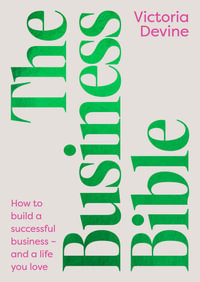
SIGNED COPY
RRP $36.99
$33.25
OFF
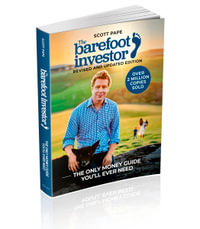
BLACK FRIDAY
RRP $32.95
$24.25
OFF
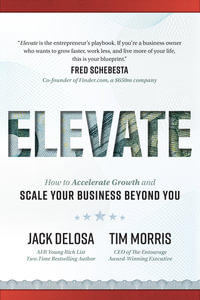
BLACK FRIDAY
Paperback
RRP $34.99
$20.95
OFF
This product is categorised by
- Non-FictionEngineering & TechnologyAgriculture & Farming
- Non-FictionBusiness & ManagementManagement & Management TechniquesManagement of Specific AreasProduction of Quality Control Management
- Non-FictionEarth Sciences, Geography, Environment, PlanningThe EnvironmentSustainability
- Non-FictionEconomicsDevelopment Economics & Emerging Economies
- Non-FictionBusiness & Management





